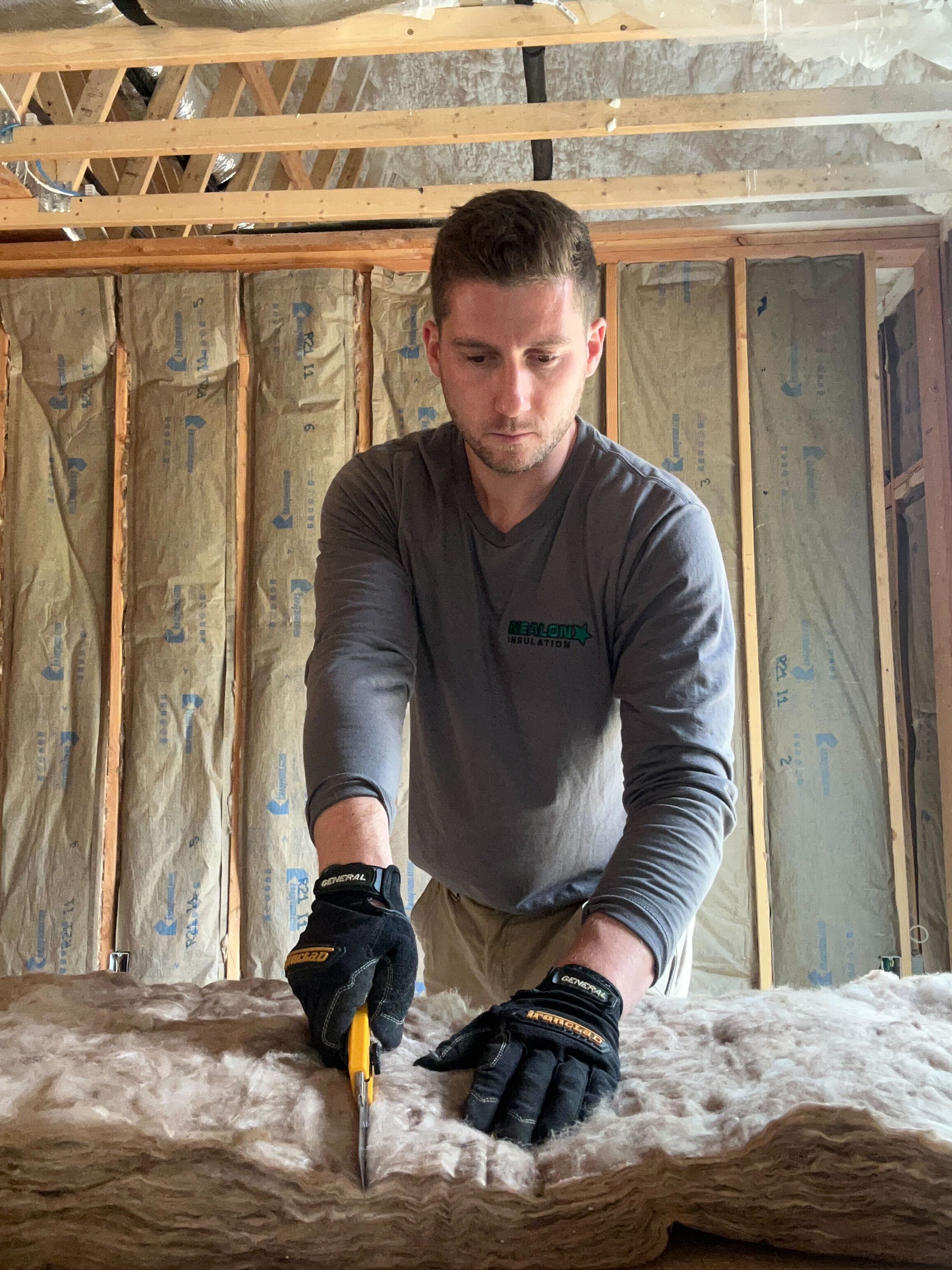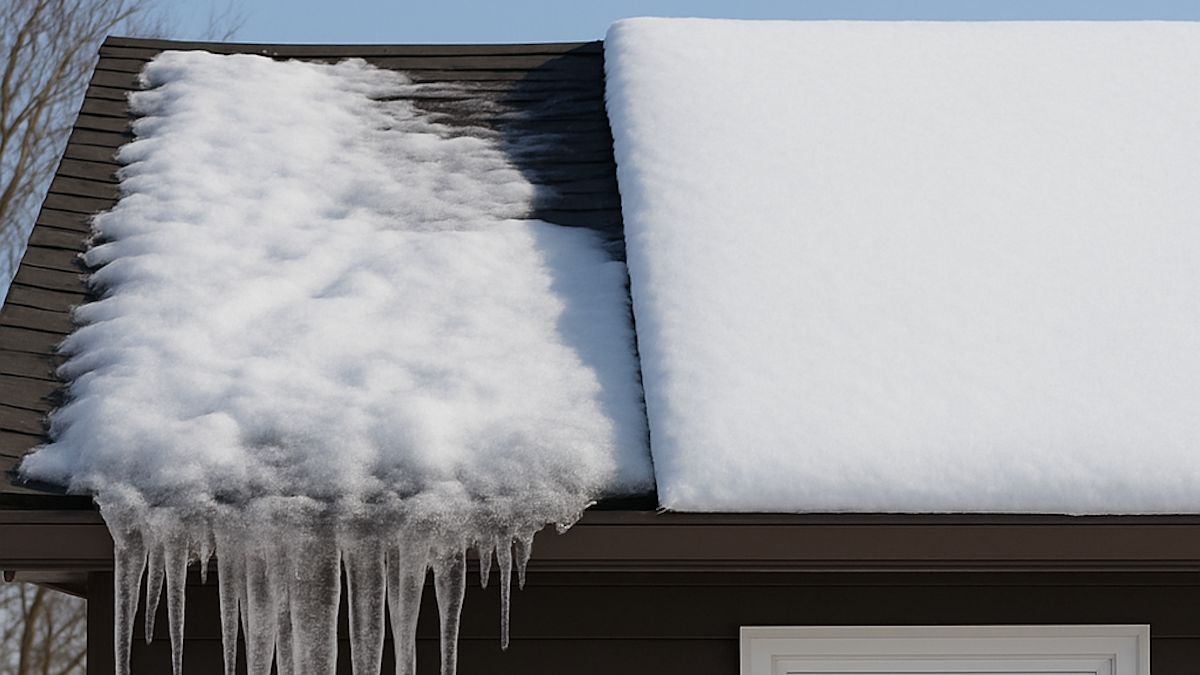How to Winterize Your Connecticut Home

Connecticut winters aren’t for the faint of heart. Here’s how to keep your house warm, efficient, and problem-free before the first nor’easter rolls in.
Winter in Connecticut Hits Hard. Is Your Home Ready?
You don’t need a meteorologist to tell you Connecticut winters are brutal. You feel it in your drafty hallway and see it in your heating bill. Every year, the same story plays out: snow piles up, the wind howls, and homeowners scramble to patch leaks and wrap pipes after the first deep freeze.
But here’s the thing: winter prep isn’t complicated. It just needs to happen before December. Whether you’re living on the shoreline or up near Hartford, the goal is the same: keep warm air in, cold air out, and your pipes from turning into popsicles.
This isn’t about panic or perfection. It’s about smart, simple steps that make a massive difference once the temperature drops. Over the next few minutes, we’ll walk through how to winterize your Connecticut home like a pro with insulation, air sealing, plumbing protection, heating system prep, and storm readiness.
At Nealon Insulation, we’ve been helping Connecticut homeowners get ready for winter since 1977. We’ve seen every mistake in the book, from bare attics to frozen basements, and it’s always cheaper to prevent a problem than fix one in February.
So grab a cup of coffee, pull up your attic ladder, and let’s get your house ready for what’s coming.
Inspect and Upgrade Your Insulation
The cheapest energy is the energy you never lose. And if your attic’s underinsulated, your furnace is basically heating the sky.
Start where the biggest leaks happen: the attic. Most Connecticut homes need R-49 to R-60, or about 14–18 inches of insulation. If you can still see the tops of your ceiling joists, you’re running light. That means heat is slipping through your ceiling and out the roof, forcing your heating system to work overtime.
Good insulation doesn’t just make your home warmer; it balances temperatures between rooms. The bedrooms upstairs shouldn’t feel like the Arctic while the living room feels like a sauna. That’s usually a sign your attic or walls aren’t holding heat evenly.
When we inspect homes along the Connecticut shoreline, we often find thin, patchy insulation or old fiberglass that’s settled and lost its punch. If it’s dusty, uneven, or smells musty, it’s time to upgrade.
Today’s materials, like dense-pack cellulose or spray foam, deliver far better coverage and air sealing than what most homes were built with decades ago. Both help prevent heat loss in winter and can lower heating costs by 15–25%.
At Nealon Insulation, we’ll size it right, seal the leaks, and leave your attic looking like a snowfield of energy savings.
Seal Air Leaks and Drafts
No sense heating the outdoors. But that’s what half of Connecticut is doing every winter, pumping warm air straight through leaky windows, outlets, and attic gaps.
You can have the best insulation in the world, but if your home leaks air, it’s like wearing a down jacket with the zipper wide open.
A quick test: light a stick of incense and move it around window frames, baseboards, and outlets on a windy day. If the smoke wavers or pulls toward the wall, air is slipping through. Common trouble spots include attic hatches, rim joists, door thresholds, and old double-hung windows that rattle when you blink.
The fix doesn’t have to be complicated.
- Weatherstrip doors and windows. It’s cheap, easy, and instantly noticeable.
- Caulk gaps around trim and siding. Silicone sealant holds up best through New England’s freeze-thaw cycles.
- Add foam gaskets behind outlet and light switch covers on exterior walls.
Professional air sealing services use diagnostic tools like blower doors and infrared cameras to track down hidden leaks. Programs like Energize CT even offer rebates for homeowners who take this step. The results are huge: tighter homes, quieter rooms, and up to 20% off your heating bills.
At Nealon Insulation, we pair insulation upgrades with precision air sealing because one without the other is like patching half a boat.
Protect Your Pipes and Plumbing
Frozen pipes don’t just ruin your morning; they can flood your basement, burst through drywall, and turn a $10 fix into a $5,000 nightmare.
Connecticut winters have a way of catching homeowners off guard when the overnight low hits single digits. A little prep now keeps your plumbing off the casualty list.
Start by insulating every exposed pipe you can find, especially in unheated areas like basements, garages, attics, and crawlspaces. Those foam sleeves from the hardware store are worth their weight in copper. Slide them over hot and cold lines alike, and tape the seams for full coverage.
Before the first hard freeze, drain your outdoor faucets and disconnect garden hoses. If your home has a shut-off valve for exterior spigots, close it and open the faucet outside to let any trapped water escape. One ice plug can split a copper pipe like a soda can.
If you’re heading out of town for the holidays, don’t kill the heat entirely. Keep your thermostat at least 55°F, open interior doors to circulate air, and let faucets drip slightly overnight during extreme cold. Moving water doesn’t freeze easily; it’s a plumber’s best-kept secret.
Insulation helps protect your plumbing too. A well-insulated basement or crawlspace keeps pipes surrounded by warmer air, reducing risk across the board.
Tune Up Your Heating and HVAC Systems
Your furnace is about to go twelve rounds with a Connecticut winter. Give it a fighting chance.
Most homeowners don’t think about their heating system until it quits, usually on the coldest night of the year when every HVAC company in the state is booked solid. Preventive maintenance keeps your system humming when you need it most.
Start simple.
- Replace your air filter. A clogged filter forces your furnace to work harder and burn more fuel.
- Vacuum out your vents and make sure they’re not blocked by furniture or rugs.
- Listen for odd noises like rattles or squeals that mean something’s wearing out.
Then schedule a furnace tune-up with a licensed Connecticut technician. They’ll check combustion safety, clean burners, and calibrate your thermostat. That visit can save you 10–15% on heating costs and extend the life of your unit.
If you’re using oil or propane, ask about energy efficiency upgrades for winter like programmable thermostats or zoning your system for better temperature control.
And remember, your heating system can only do so much if your home is leaking air or underinsulated. A well-sealed home keeps warmth where it belongs so your furnace doesn’t have to work overtime.
Prep for Snow, Ice, and Storms
When the first nor’easter drops eight inches overnight, you’ll wish you’d handled this list in October.
Ice, wind, and heavy snow can test every weak point in your home at once. Roofs leak, gutters clog, and branches fall right when you least need the drama. A little prep now turns those headaches into small chores.
Start with the roof and gutters. Clear out every leaf and pine needle before the temperature dips. Gutter cleaning before winter storms prevents ice dams that trap melting snow and soak your ceilings.
Trim back branches hanging over your home or power lines. Ice adds weight fast, and one cracked limb can take out a gutter or worse.
Check your foundation for cracks and seal them before freeze-thaw cycles make them worse. Same for your driveway; a little concrete sealer now beats spring repairs later.
Then review your Connecticut winter home checklist:
- Flashlights and fresh batteries
- Rock salt or pet-safe ice melt
- Shovels (get two; one always breaks)
- Generator fuel
- A few extra gallons of water and canned food for power outages
Finally, check attic ventilation. Balanced airflow keeps your roof cold enough to prevent ice dams and helps your insulation stay dry.
Storm preparation tips for Connecticut always come down to one thing: fix small problems now before the weather turns them into big ones.
The Best Way to Winterize a Connecticut Home
Winterizing your home isn’t about gadgets or panic runs to the store. It’s about doing the fundamentals before the cold hits. Seal up leaks, add insulation, protect your pipes, and make sure your furnace and roof can take a punch.
Do those things, and you’ll glide through February while everyone else is defrosting pipes with a hair dryer.
The best way to winterize a home in CT is to think of it as insurance, not against the weather but against waste. Every draft you stop and inch of insulation you add pays you back every single winter.
At Nealon Insulation, we’ve been helping Connecticut homeowners do just that since 1977. We’ve seen homes go from icebox to airtight and families finally stop fighting over who sits closest to the heat vent.
Winter prep doesn’t need to be dramatic. It just needs to be done right.
FAQ's about Winterizing a Home in CT
What month should I start winterizing my home in Connecticut?
Start winterizing your home in Connecticut between September and early November. This period allows enough time to inspect insulation, service your furnace, and seal air leaks before freezing temperatures set in. Waiting until after consistent 32°F nights can lead to higher energy bills and greater risk of frozen pipes.
Do newer homes in Connecticut still need winterization?
Yes, newer homes in Connecticut still need winterization. Building codes set minimum standards, not peak efficiency levels. Even recent homes often have air leaks around lights, attic hatches, and rim joists. A professional energy audit verifies whether insulation and sealing meet optimal comfort and energy-saving performance.
What’s the difference between air sealing and insulation?
The main difference between air sealing and insulation is function. Air sealing stops drafts by closing gaps and cracks that let air escape, while insulation slows heat transfer through walls, ceilings, and floors. Together they create an efficient thermal barrier—like a jacket’s zipper and filling working in tandem.
Can poor attic ventilation cause winter problems?
Yes, poor attic ventilation can cause major winter problems like ice dams, moisture buildup, and mold. Without proper airflow, warm indoor air melts roof snow unevenly, which refreezes at the edges. Balanced intake and exhaust ventilation keep the attic cold and dry, protecting shingles, insulation, and roof structure.
Are there rebates or tax credits for winterizing a home in Connecticut?
Yes, Connecticut offers rebates and tax credits for home winterization. Energize CT provides rebates for insulation, air sealing, and heating upgrades. Federal tax credits under the Inflation Reduction Act cover up to 30% (up to $1,200 annually) for qualifying ENERGY STAR improvements. A Home Energy Solutions audit identifies eligible upgrades.
Related Articles
Let's Work Together
Ready to transform your home into an energy-efficient haven? Schedule your free energy assessment today and experience the Nealon difference for yourself.



